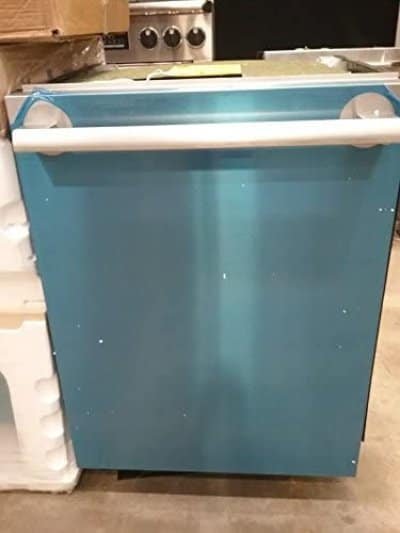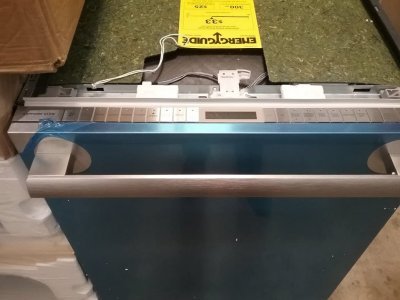A dishwasher can be a great appliance to have in your home, but there may come a time when you need to disconnect it. Perhaps you are renovating your kitchen, moving to a new home, or simply need to replace the dishwasher with a new one. Whatever the reason, disconnecting a dishwasher can seem like a daunting task, especially if you have never done it before. In this article, we will guide you through the steps necessary to disconnect a dishwasher safely and efficiently.
Table of Contents
Step 1: Turn off the Power
The first step in disconnecting a dishwasher is to turn off the power. Dishwashers are typically hardwired into an electrical circuit, so you will need to turn off the circuit breaker that powers the dishwasher. This will help prevent electrical shocks and other hazards when working with the appliance.
To turn off the circuit breaker, locate your home’s electrical panel. This is usually located in the basement or utility room. Look for the circuit breaker labeled “dishwasher” or “kitchen.” Switch off the breaker by flipping it to the “off” position. Once you have turned off the power, use a voltage detector to test the wires to make sure there is no electrical current flowing through them.
Step 2: Disconnect the Water Supply
After turning off the power, you will need to disconnect the water supply to the dishwasher. This is usually located under the sink, where the dishwasher hose connects to the water supply valve. Turn off the valve by turning the handle clockwise until it stops. If you cannot locate the valve, turn off the main water supply valve for your home.
Once the water supply is turned off, use a pair of pliers to loosen the nut that connects the dishwasher hose to the water supply valve. Carefully pull the hose away from the valve and let any excess water drain into a bucket. If the hose is difficult to remove, use a utility knife to cut through any adhesive or caulking that may be holding it in place.
Step 3: Disconnect the Drain Hose
After disconnecting the water supply, you will need to disconnect the drain hose from the dishwasher. The drain hose is usually located under the sink, where it connects to the sink’s drainpipe. Use a pair of pliers to loosen the clamp that holds the hose in place. Carefully slide the hose off the drainpipe and let any excess water drain into a bucket.
Step 4: Remove the Dishwasher
Once the water and drain hoses are disconnected, you are ready to remove the dishwasher from its location. The dishwasher is usually held in place by mounting brackets that attach it to the countertop or cabinets. These brackets can be located at the front or rear of the dishwasher.

To remove the mounting brackets, use a screwdriver to loosen the screws that hold them in place. If the dishwasher is attached to the countertop, you may need to remove any screws or bolts that secure it to the countertop.
Once the mounting brackets are removed, carefully slide the dishwasher out of its location. Be sure to have a partner help you with this step, as dishwashers can be heavy and awkward to move.
Step 5: Disconnect the Electrical Wiring
The final step in disconnecting a dishwasher is to disconnect the electrical wiring. This is usually located at the junction box located at the back of the dishwasher. Use a screwdriver to remove the cover from the junction box.
Inside the junction box, you will see several wires that are connected to the dishwasher. Use a pair of wire cutters to cut the wires, making sure to leave enough length on each wire to make future connections easier. If the wires are connected with wire nuts, use a pair of pliers to loosen the wire nuts and separate the wires.
With the wires disconnected, carefully lift the dishwasher out of its location and transport it to its new location or dispose of it properly.
Step 6: Clean Up
After the dishwasher has been removed, you will need to clean up any remaining debris and restore any modifications made during the installation of the dishwasher. This includes removing any brackets or screws that were used to hold the dishwasher in place, filling any holes that were drilled in the cabinets or countertop, and cleaning up any water or debris left behind.
Step 7: Prepare for Reinstallation
If you plan to install a new dishwasher, it is important to prepare the location for the new appliance. This includes checking the electrical and plumbing connections, making sure the area is clean and dry, and ensuring the new dishwasher will fit properly in the designated location.

Before installing the new dishwasher, it is important to read the manufacturer’s instructions carefully to ensure proper installation. This will help prevent any future issues with the dishwasher and ensure it operates safely and efficiently.
Conclusion
Disconnecting a dishwasher may seem intimidating, but it can be done safely and efficiently by following the steps outlined above. Always be sure to turn off the power and water supply before attempting to disconnect the dishwasher, and seek the help of a professional if you are unsure of any step in the process.
Properly disconnecting and disposing of old appliances is important for the safety of your home and the environment. By taking the time to carefully disconnect and remove your old dishwasher, you can ensure a smooth transition to a new appliance and enjoy the benefits of a clean and efficient kitchen.

